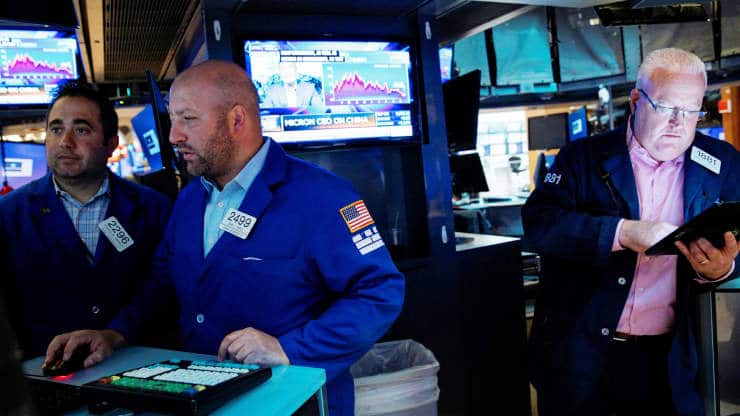
If history is a guide, the market should do well in the upcoming Thanksgiving holiday week.
The S&P 500 was slightly higher in the past week, buoyed by positive economic reports, particularly the unexpectedly strong 1.7% jump in October’s retail sales. There are a number of economic reports in the week ahead. The most important release is Wednesday’s personal consumption expenditures, which includes the inflation measure most watched by the Federal Reserve.
“The last five trading days of November are traditionally positive, since 1950,” said Sam Stovall, chief investment strategist at CFRA. “There’s a two-thirds likelihood the market is up on the day before Thanksgiving and a 57% likelihood the day after Thanksgiving, and a 71% likelihood that it’s up on Monday.”
This year that holiday rally could depend on whether Federal Reserve Chairman Jerome Powell continues in his role after his term expires in February. Biden has also interviewed Fed Governor Lael Brainard, who is supported by progressive Democrats.
Strategists expect market volatility around the appointment, particularly if it is Brainard. She is viewed as more dovish than Powell, meaning she may be slower to raise interest rates. Elevated levels of inflation have been a concern in the market, and the worry is Brainard would not be as aggressive fighting it with rate hikes if necessary.
“Barring a change at the helm of the Fed, I think the market trajectory is going to continue to be higher, as we move toward 2022,” said Jeff Schulze, investment strategist with ClearBridge Investments. “Given that Brainard is even more dovish than Powell, I think markets would recover very quickly… the markets are unsure whether the new Fed chairman could command consensus within the FOMC to effectively deliver policy,” he added.
Schulze said the economic momentum is improving, and he expects that fourth-quarter gross domestic product could be in the double digits after the disappointing 2% pace of the third quarter. The second reading for the third-quarter GDP is released Wednesday.
In the past week, the Philadelphia Fed manufacturing index also showed solid, better-than-expected activity in the mid-Atlantic region. “It really confirms the view that despite supply side constraints, the recovery is on track after the Covid-related slowdown in Q3,” Schulze said. “I think the markets are going to price in better earnings as we move into fourth-quarter earnings and 2022.”
But Stovall said the market may take a pause before it moves higher, and he expects a choppy period. The S&P 500 gains on average 7.2% between its October low and the end of the year. But by early November, the S&P 500 was up more than 9% from its low, and was overbought, he said.
Stovall also said the market could become concerned again about the spread of Covid in Europe and beyond. Due to a high rate of new cases, the government of Austria announced a three-week lockdown and a vaccine mandate.
Stocks reacted negatively to the Austrian news Friday, though the tech-heavy Nasdaq gained. Stocks were mixed for the week, with the Dow down 1.4% and the Nasdaq up 1.2%, lifted by tech stock gains. The S&P 500 was up 0.3% for the week, ending at 4,697.
“There is still upside potential. The worry about inflation and now Covid are reasons for the overbought condition to work itself through,” he said. Stovall added the market could move sideways to lower for awhile, but it should end the year higher. “But right now, there’s a bit of choppiness because of Covid, because of the Fed chair possibly being replaced the worry about inflation and now and a whole variety of things,” he said.
For investors who watch the benchmark 10-year Treasury yield, Wells Fargo bond strategists point out that long-term Treasury yields generally move lower on the Monday and Tuesday before Thanksgiving.
“Our take is straightforward, and is essentially the same rationale as for moves around Labor Day: risk appetite is low on both the buy and sell sides,” they said. But later in the week, starting Wednesday, the yield tends to rise.





























